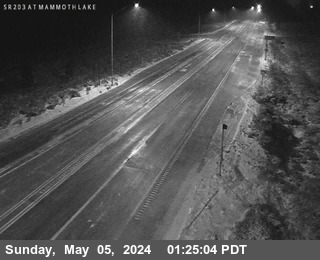Brought to you by Howard Sheckter
Archive for August, 2013
Mammoth Clear and Virtually Smokless…..Upper Trough off Shore will give way to a little southerly flow increasing a chance of some Showers or Thunder for Tomarrow…..Very active pattern continues over Southern California Deserts as remains of TS Ivo interact with Rt Rear Entry of Upper Jet……
Monday August 26, 2013
Quick Update Tuesday:
Rim Fire is 20% contained….179,481 acres burned as of this morning…..Future fire growth potential is extreme.
A slight westward expansion of the continental upper high has spread some warmth in the mid levels and has created stronger inversions for the next couple of days. This means that areas down stream from the fire will have more concentrated smoke. Areas like northern Mono County and especially Coleville and Topaz are under a dense smoke advisory. It’s probably a good idea for elderly folks with respiratory issues to find some cleaner air else ware. Southern Mono County Air in areas like Mammoth and June Lake is pretty clean these days.
Monsoon Moisture:
Upper flow at 500mb is SW, However upper flow at 700MB is South…thus mid-level moisture is allowed to move north today and bring a slight chance (20%) of TSRWs to the Mono County area. Deeper moisture is to the east of us and areas like the Owens Valley and south will have a greater chance of rainfall (50%). The outlook is for little change in the pattern until the weekend when a storm pushes east through the pacific NW increasing the winds from the West. That system is Fall like with a 558 thickness pool. No doubt that some snows will fall in the Washington Cascades. As far as Mammoth goes, there will be an increase of wind Sunday PM from the west then a dry front following with NW flow behind it. This may for the “first time” any significant RIM Fire smoke or haze gets into the Mammoth or June Lakes area later Sunday PM and or Monday behind the front.
The Dweeber………………………………………………..
As of Monday AM (Rim Fire) near Yosemite is now 15% contained…
Mammoth has been fortunate this go around to be north of fires burning to our south and well south of fires burning to our north. This is in contrast to late July when the Aspen Fire was active.
Again…..The Weather is beautiful in Mammoth unaffected by the Smoke from the Yosemite fire (Rim fire)
Now for the interesting stuff….
Large scale pattern highlighted by strong subtropical continental ridge over the nations mid section and late Summer Trof off the coast of the Pacific NW extending south down the west coast. The upper jet in the bottom of the Trof is enhancing precipitation by Divergence Aloft and surface convergence….interacting with remnants from TS Ivo over Southern Ca. Mts and Deserts dynamic lift along with deep subtropical moisture will create very heavy rain and flash flooding in the southern deserts today. As the upper flow backs a bit more southerly Tuesday, some of the moisture may work further north into the Mojave desert and even parts of Kern County Mts and act upon the upper just that will by then come in a bit further north. As far as Mammoth goes there is a chance of Thunderstorms Tuesday and evening from a brief surge of moisture. By Thursday the new 12z gfs guidance back the upper flow more to the WSW so if that verifies…..well go dry again…..Thursday into the weekend.
More later in that…
The Dweeber………………………:-)
Below is a fabulous analogy from Retired WSFO-RNO forecaster Tom Cylke, all you Weather Dweebs out there with more than a basic understanding of summertime convection. Tom has in the past written and published several abstracts on Summertime thunderstorm patterns that are regional to Eastern CA as well as areas of the Desert Southwest including the effect of outflow winds in the Las Vegas Valley.
Below is a current discussion during the current real time pattern as well as well as a pressure cooker analogy that works great any ware in the Eastern Sierra or Great basin and or Desert Southwest during the Summertime.
Current heavy pcpn pattern over Srn Ca being dynamically supported by strong upper divergence and low level convergence coupling in RRQ of 70 kt SWly jet across central Nevada (see latest SPC analysis of these fields). These jet patterns will typically form this time of year when thermal gradients (frontogenetic zones) tighten between the desert SW (4 corners high) and colder troughs moving into Pacific NW. You will also see a spin up of upper level winds at jet level in the north quads of tropical storms and hurricanes as they move north into northern latitudes. Deformation zones are in fact frontogenetic zones where the wind field converges the isotherms or thickness lines closer together resulting in a stronger jet aloft and stronger upper divergence values.
The high PW values currently over the desert SW are being supported by this UVV from the strong coupling of Upper Div and low Conv.
Here is a good analogy for convection. A pot of boiling water. The bottom of the pot is UVV, the sides are convergence, the water is PW, the steam is convection, the temperature of the water is instability( hotter is more unstable), the boiling point is zero lifted index or positive CAPE values where free convection occurs. the sun is the flames of the stove. putting a lid on the pot suppresses the convection or steam by increasing pressure above surface of water (subsidence) but still allows temperatures, theta-e and CAPE values to increase until the lid is removed by divergence and subsequent cooling aloft allowing for explosively deep convection to occur. Remember with out the UVV or bottom of pot and low level convergence or sides of pot the water (PW) will quickly diminish.
Would be great to see the RRQ of a jet develop over the Yosemite fire. Keep looking at the SPC analysis to see the obvious correlations between Upper Div, Zero LI/pos CAPE, low level convergence and thunderstorms. Look at PW, K index greater than 30, theta e ridges to delineate higher base thunderstorms from the heavier flash flood producing variety. Look at high CAPE and wind shear (ri number) to delineate Severe thunderstorms from other type of convection. High values of CAPE and helicity (low level cyclonic wind shear) will correlate to Tornadic thunderstorms.
Tom




